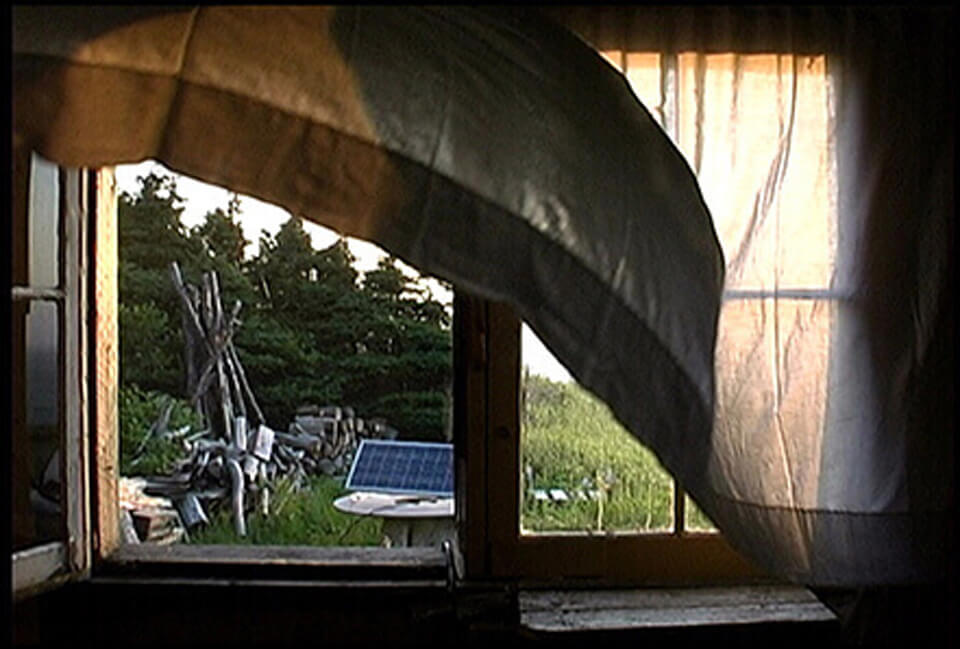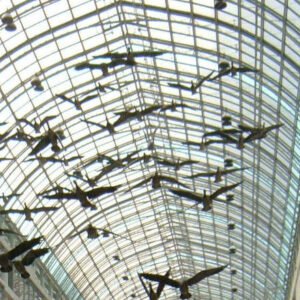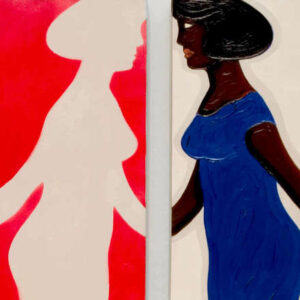Solar Breath 2002

Michael Snow, Solar Breath (Northern Caryatids), 2002
Video projection, colour, sound, 61:32 min., looped, 2 m wide; filmed at the artist’s summer cabin in Newfoundland
Solar Breath (Northern Caryatids) is a video projection based on an unedited 62-minute recording of image and sound made from a fixed camera position. The projection is looped for continuous play in a gallery installation. Solar Breath (Northern Caryatids) is an innovation in Snow’s practice, though not entirely unprecedented. His first gallery projection, using 8mm film, was a Walking Woman work titled Little Walk, 1964. In addition, while most of Snow’s films were made in 16mm, he would occasionally use live-feed video for gallery works such as De La, 1972, and Observer, 1974. In 2001 he produced Sheeploop, a pastoral work shown on video monitors that are dispersed around a gallery. Solar Breath (Northern Caryatids) asks for and accommodates with seating a more absorbed spectator.
Snow situates Solar Breath (Northern Caryatids) in a family of works involving processes of recognition and translation into photography, film, or video. He describes this kind of artmaking in Duchampian terms: ordinary things that materially accrue, or are observed to repeat, are “taken-by-surprise” into the realm of art.1 Solar Breath (Northern Caryatids) was conceived when Snow recognized that a fascinating natural phenomenon, occurring in a man-made dwelling, had the potential for transformation into art. The site of this discovery was a casement window built by Snow in his Newfoundland cabin; his wife, Peggy Gale, made the curtain. Half of the window is screened, and when that half is open around sunset, and all other atmospheric conditions are just right, the curtain begins to move, billowing out and then snapping back, sucked flat into folds against the screen.
Snow observed and listened to this performance for years, waiting for the perfect set of conditions, which he then recorded—and not just the vision but also the sound, which is strangely powerful, a force of nature. The combination is enthralling, and there is more: as the curtain rises and falls in beautiful folds against the screen, sound bounces off the glass, sound that emanates from the interior of the cabin. And this sound is also beautiful: soft murmuring voices of a woman and a man; the occasional clink of a dish or a glass; the sound of dailiness from which “near-art” experience comes.
The art experience offered by Solar Breath (Northern Caryatids) belongs to yet another family of works in Snow’s oeuvre. His window works span the entire course of his career and appear in all media. In Solar Breath (Northern Caryatids) the curtain flutters inward, revealing trees, stacked firewood, and a solar panel—a landscape and a still life to which this window directs our attention.

 About the Author
About the Author
 Download PDF
Download PDF
 Credits
Credits